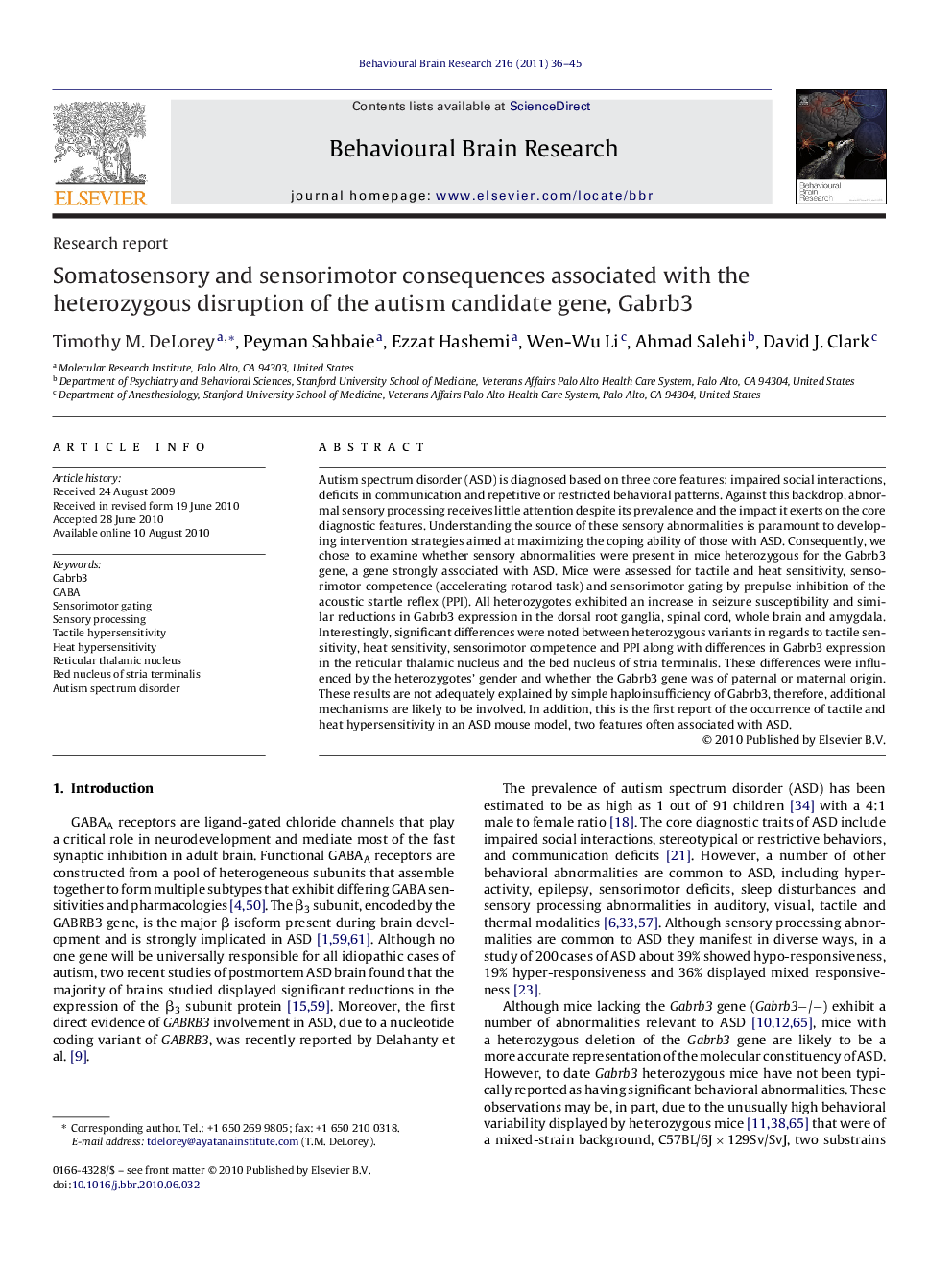| Article ID | Journal | Published Year | Pages | File Type |
|---|---|---|---|---|
| 4313978 | Behavioural Brain Research | 2011 | 10 Pages |
Autism spectrum disorder (ASD) is diagnosed based on three core features: impaired social interactions, deficits in communication and repetitive or restricted behavioral patterns. Against this backdrop, abnormal sensory processing receives little attention despite its prevalence and the impact it exerts on the core diagnostic features. Understanding the source of these sensory abnormalities is paramount to developing intervention strategies aimed at maximizing the coping ability of those with ASD. Consequently, we chose to examine whether sensory abnormalities were present in mice heterozygous for the Gabrb3 gene, a gene strongly associated with ASD. Mice were assessed for tactile and heat sensitivity, sensorimotor competence (accelerating rotarod task) and sensorimotor gating by prepulse inhibition of the acoustic startle reflex (PPI). All heterozygotes exhibited an increase in seizure susceptibility and similar reductions in Gabrb3 expression in the dorsal root ganglia, spinal cord, whole brain and amygdala. Interestingly, significant differences were noted between heterozygous variants in regards to tactile sensitivity, heat sensitivity, sensorimotor competence and PPI along with differences in Gabrb3 expression in the reticular thalamic nucleus and the bed nucleus of stria terminalis. These differences were influenced by the heterozygotes’ gender and whether the Gabrb3 gene was of paternal or maternal origin. These results are not adequately explained by simple haploinsufficiency of Gabrb3, therefore, additional mechanisms are likely to be involved. In addition, this is the first report of the occurrence of tactile and heat hypersensitivity in an ASD mouse model, two features often associated with ASD.
